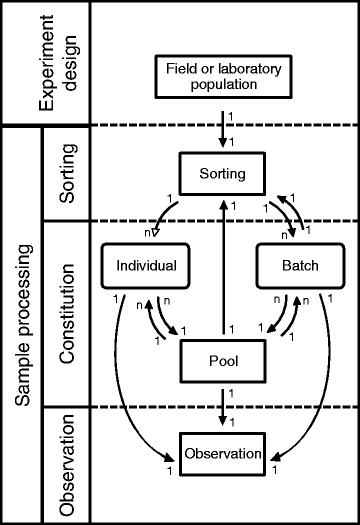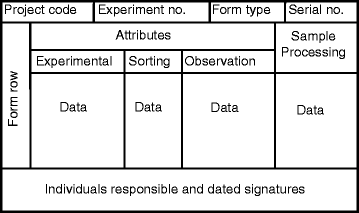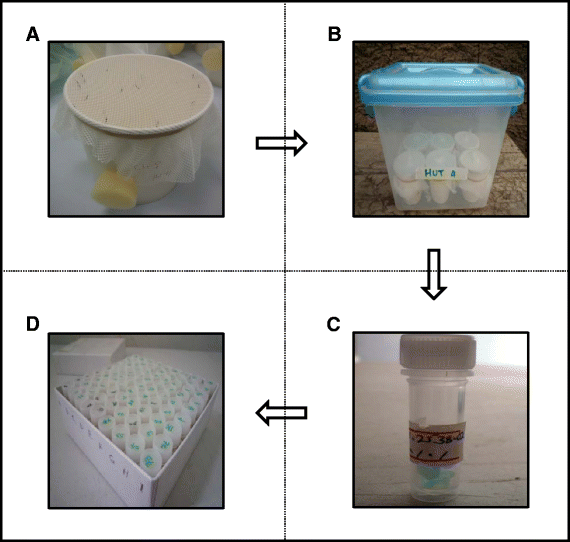A generic schema and data collection forms applicable to diverse entomological studies of mosquitoes
- PMID: 27022408
- PMCID: PMC4809029
- DOI: 10.1186/s13029-016-0050-1
A generic schema and data collection forms applicable to diverse entomological studies of mosquitoes
Abstract
Background: Standardized schemas, databases, and public data repositories are needed for the studies of malaria vectors that encompass a remarkably diverse array of designs and rapidly generate large data volumes, often in resource-limited tropical settings lacking specialized software or informatics support.
Results: Data from the majority of mosquito studies conformed to a generic schema, with data collection forms recording the experimental design, sorting of collections, details of sample pooling or subdivision, and additional observations. Generically applicable forms with standardized attribute definitions enabled rigorous, consistent data and sample management with generic software and minimal expertise. Forms use now includes 20 experiments, 8 projects, and 15 users at 3 research and control institutes in 3 African countries, resulting in 11 peer-reviewed publications.
Conclusion: We have designed generic data schema that can be used to develop paper or electronic based data collection forms depending on the availability of resources. We have developed paper-based data collection forms that can be used to collect data from majority of entomological studies across multiple study areas using standardized data formats. Data recorded on these forms with standardized formats can be entered and linked with any relational database software. These informatics tools are recommended because they ensure that medical entomologists save time, improve data quality, and data collected and shared across multiple studies is in standardized formats hence increasing research outputs.
Figures



References
Grants and funding
LinkOut - more resources
Full Text Sources
Other Literature Sources

